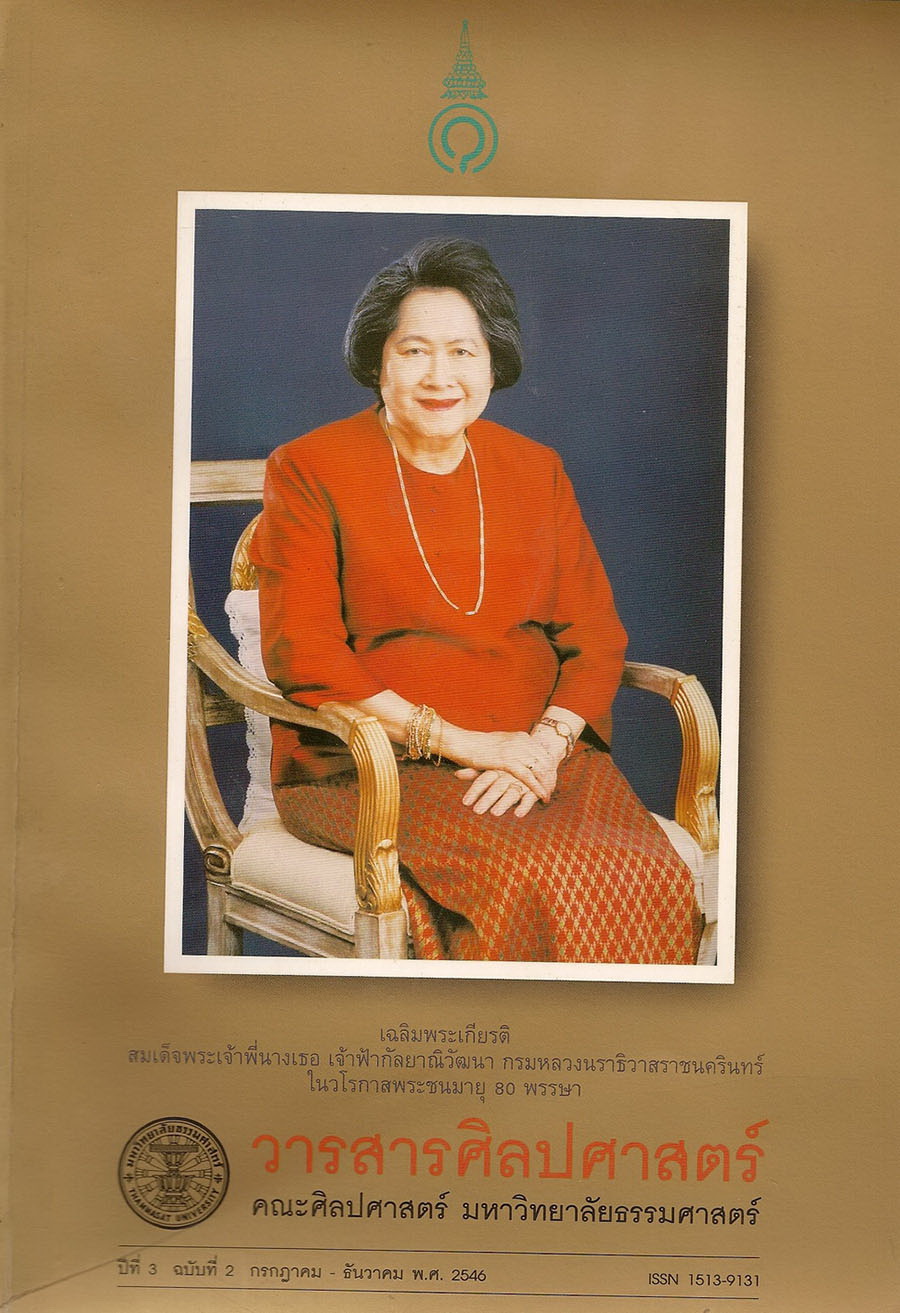La linguistique de I’énonciation: repéorique et objet de recherché
Main Article Content
บทคัดย่อ
Since the 1960s, a number of linguistic studies in France have been inspired by a new linguistic current called “énonciation” linguistics. Its conception, defined as the performance of language by individual speakers in actual situations by Benveniste, is derived from the famous opposition “langue” and “parole” introduced by Saussure in the early 1920s. The distinction between “énonciation” linguistics and pragmatic linguistics is based on their origins and their areas of studies. Pragmatic linguistics comes from the work of a British philosopher, J.L. Austin. It concentrates on the role and the signification of utterances, in terms of communicative activity, in relation to the behavior of a speaker and a hearer in interpersonal communication. In contrast, “énonciation” linguistics, originally from European neo – structuralism grammar and from the French language, focuses on three main areas of studies in concrete utterances : shifters, deixis or some elements referring directly to the personal, temporal or locational characteristics of the situation in which the utterances take place, modality or a speaker’s attitudes towards his hearer, his utterances or the hierarchy of information in his utterances, and heterogeneous characteristics of a speaker’s speech such as reported speech.
ตั้งแต่ปี ค.ศ. 1960 เป็นต้นมา มีผลงานวิจัยทางภาษาศาสตร์เป็นจำนวนมากในประเทศฝรั่งเศสที่ยึดหลักทฤษฎีภาษาศาสตร์ในการวิเคราะห์กระบวนการการผลิตข้อความ (Linguistique de I’énonciation) ซึ่ง Benvenisteให้คำจำกัดความไว้ว่าเป็นกระบวนการใช้ภาษาของปัจเจกบุคคลในสถานการณ์จริง หลักการของทฤษฎีนี้พัฒนามาจากความแตกต่างระหว่างภาษา (langue) และถ้อยคำ (parole) ซึ่ง Saussure ได้กล่าวนำไว้ในราวปี ค.ศ.1920 ทฤษฎีภาษาศาสตร์ในการวิเคราะห์กระบวนการการผลิต ข้อความแตกต่างจากทฤษฎีภาษาศาสตร์ปฏิบัติ (Pragmatiquelinguistique) โดยมีต้นกำเนิดของทฤษฎี และวัตถุประสงค์ในการวิเคราะห์ที่แตกต่างกัน ทฤษฎีภาษาศาสตร์ปฏิบัติพัฒนามาจากผลงานของข้อความ (énoncé) ในกรอบของการสื่อสาร โดยเน้นพฤติกรรมความสัมพันธ์ระหว่างบุคคลของผู้พูดกับผู้ฟังในการสื่อสาร ทฤษฎีภาษาศาสตร์ในการวิเคราะห์กระบวนการผลิตข้อความพัฒนามาจากทฤษฎีการวิเคราะห์ไวยากรณ์แบบโครงสร้างของยุโรปและจากภาษาฝรั่งเศส โดยมุ่งวิเคราะห์ความหมายของคำ สำนวนในฐานะของคำอิงสถานการณ์ (déictique) ที่อ้างถึงบุคคล สถานที่และเวลา ซึ่งเป็นองค์ประกอบสำคัญของสถานการณ์ที่มีกระบวนการผลิตข้อความ ทัศนคติของผู้พูด (modalité) ที่มีต่อผู้ฟัง ข้อความ และการเรียงลำดับข้อมูลในข้อความ รวมถึงองค์ประกอบที่มีที่มาหลากหลายในกระบวนการการผลิตข้อความของผู้พูด (hétérogénéité du dire) เช่น การนำเสนอคำพูดของผู้อื่น (discoursrapporté)


